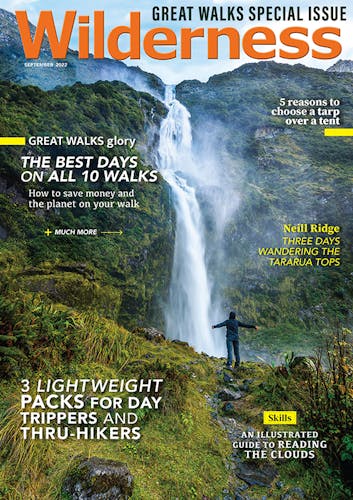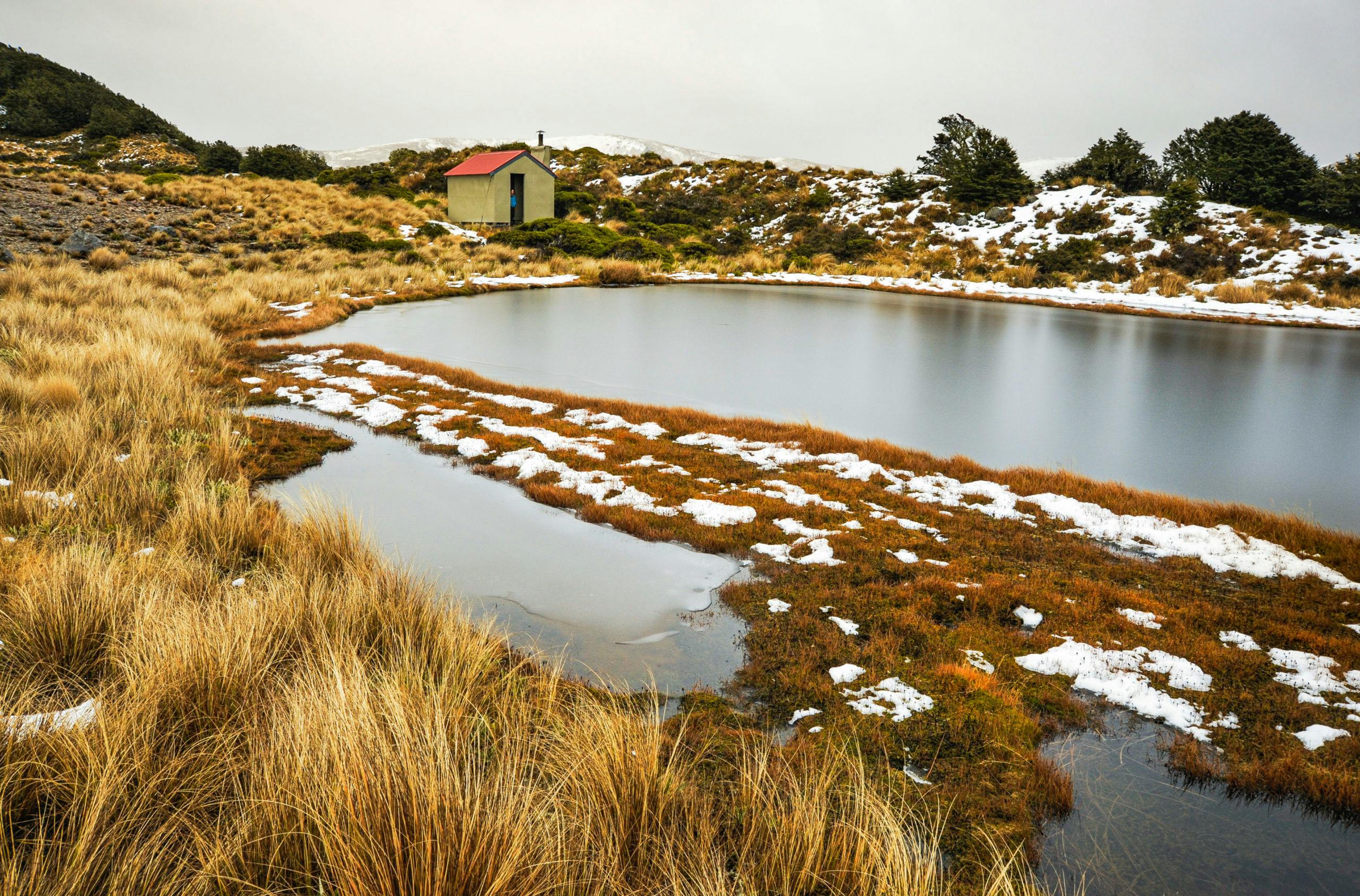There’s only one thing better than a scenic mountain tarn: a tarn with a hut nearby.
The word tarn suggests cool mountain waters nestled in a shallow basin. Saying the word aloud with a rolling ‘r’ hints at its etymological origins.
The term came to Aotearoa with Scottish immigrants, who use it to describe a small mountain lake. However, its origins go back even further, to when Scandanavians settled parts of what is now Scotland. In Old Norse, ‘tjorn’ means a small mountain lake without tributaries.
The strict definition of a tarn is a small lake formed in a cirque carved by a glacier, sometimes alternatively called a ‘corrie loch’ in parts of Cumbria. But in mountainous parts of the United Kingdom and here in New Zealand, the term has expanded to include any small mountain lake, not necessarily with glacial origins. For example, some, notably in the Tararua and Ruahine ranges, are located in the crevices caused by fault scarps or slumps left by erosion.
What’s better than a scenic tarn amid mountains? Perhaps one with a convenient hut nearby. These four backcountry huts all bear the name Tarn.
1 Tarn Biv Ruahine Forest Park
Tarn Bivouac is a classic dogbox-style bivvy, recently refurbished by Backcountry Trust volunteers. The Black Ridge rises from the Tukituki River in the eastern Ruahine mountains, intercepting the main range at Ohuinga, just north of the infamous Sawtooth Ridge. Easiest access is from Mill Road, up the Tukituki River, and then up the steep Rosvalls Track. While the bivouac itself is not exactly ‘tarnside,’ there are some large tarns a few hundred metres further along the ridge.
2 Tarn Ridge Hut, Tararua Forest Park
Tarn Ridge Hut is not lakeside either (it takes its name from the flat section of ridge to the north) but does occupy an excellent site with commanding views towards the Bannister Ridge. Most trampers reach the hut from Mitre Flats, after traversing over Mitre and Girdlestone (allow one long or two moderate days). Going that way, it’s worth detouring a short way down Dorset Ridge to a large tarn there. At present Tarn Ridge Hut is suffering from water damage, so trampers might prefer to stay at nearby Dorset Ridge Hut. Alternatively, good camping exists beside one of Tarn Ridge’s tarns.
3 Tarn Hut, Mt Richmond Forest Park
The five-bunk Tarn Hut gets a lot of use these days during the summer Te Araroa season, as it provides shelter on the long section through the Richmond Range. The hut takes its name from a nearby sizable lakelet, surrounded by beech forest, which offers fine reflections in the right conditions. There are several ways to Tarn Hut: over the Alpine Route, up a track from the Goulter Valley, or via the Wairoa River Left Branch. All take 2–3 days.
4 Tarn Hut, Puketeraki Conservation Area
This wee gem of a hut lies on the tops of Lilburne Hill in the Canterbury foothills. It overlooks a fine tarn occupying a shallow scoop and can be reached on an excellent two-day circuit from the Lees Valley Road. The Youngman Stream Track follows the Ashley River to the Lilburne river junction, then climbs an old farm track onto the tops to reach Tarn Hut. Beyond, a poled route continues over Lilburne Hill and down to Youngman Stream Hut. From there the track follows Youngman Stream to link with your inward route.








